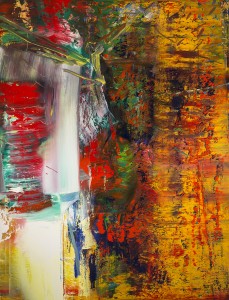
Gerhard Richter, Untitled, 1986, acrylic on canvas, Collection of Preston H. Haskell. Photograph courtesy of Douglas J. Eng. © 2015 Gerhard Richter.
The Cummer Museum of Art & Gardens is pleased to present Rothko to Richter: Mark-Making in Abstract Painting from the Collection of Preston H. Haskell, organized by the Princeton University Art Museum. The exhibition will be on display January 30 to April 22 and will show a collection of mid-20th Century art that highlights one of the most active periods of artistic development—Abstraction. The years from 1950 to 1990 are distinguished by artists’ departure from traditions such as narrative and symbolism in their works and beginning to explore the literal act of applying paint to canvas.
Kelly Baum, Haskell Curator of Modern and Contemporary Art at the Princeton University Art Museum says of the collection, “Each artist sought to redefine abstract painting for a new social and cultural milieu. Each asked him or herself: what does it mean to make an abstract painting in 1950, 1960, 1970, 1980, or 1990?” Although they came to contrasting conclusions, “the artists in Rothko to Richter tended to approach the question through the same means, mark-making.”
Through 27 carefully selected works by some of the era’s most important artists, including Karel Appel, Helen Frankenthaler, Hans Hofmann, Franz Kline, Willem de Kooning, Morris Louis, Joan Mitchell, Robert Motherwell, Robert Rauschenberg, Gerhard Richter, and Mark Rothko, visitors will be able to grasp the scope of artists’ differing approaches to abstraction. Some artists worked to depersonalize the act of mark-making, to literally divorce the mark from the artist’s hand, while others emphasized the artist’s hand and the movement behind it, dripping the paint and using fluid sweeping motions.
Preston Haskell has been collecting art for more than 40 years, both as an individual and for The Haskell Company. Haskell says, “Art stimulates and energizes the human mind and spirit, making us more imaginative and creative.” Visitors will have the opportunity to connect to Rothko to Richter through a variety of public programs.


